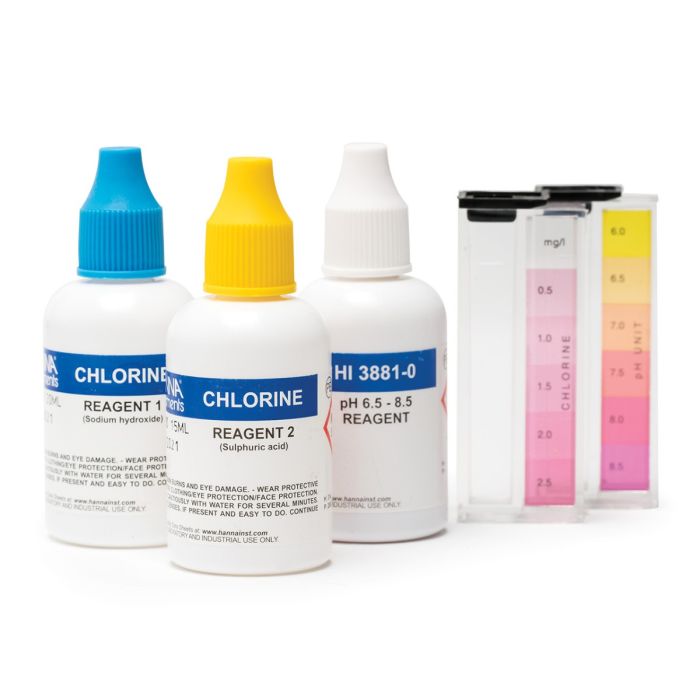Description
The HI3887 is a colorimetric chemical test kit that determines the free chlorine concentration and pH level in samples within a 0.0 to 2.5 mg/L (ppm) Cl–range and 6.0 to 8.5 pH range. The HI3887 is supplied with all of the necessary reagents and equipment to perform the analysis. The test kit contains enough reagents for perform approximately 50 tests for free chlorine and 100 tests for pH.
Features at-a-glance
- Complete setup
- All required materials are included with the test kit, such as the color comparison cubes and reagent dropper bottles.
- High resolution
- Free chlorine readings from 0.0 to 2.5 mg/L are determined to 0.5 mg/L resolution.
- pH readings from 6.0 to 8.5 pH are determined to 0.5 pH resolution.
Significance of Use
Chlorine is one of the most commonly used disinfectants for drinking water, wastewater, and water used for pools and spas. It can be added to in various forms including calcium hypochlorite, sodium hypochlorite, or in some instances, chlorine gas. When added to water, chlorine creates hypochlorous acid (HOCl) which dissociates into hypochlorite ion (OCl–).
HOCl ↔ H+ + OCl–
hypochlorous acid ↔ hydrogen ion + hypochlorite ion
HOCl is the form of chlorine that acts as a stronger disinfectant as compared to OCl–. To ensure the added chlorine is effective at sanitizing, the pH of the water must be taken into account. Around pH 7.5, HOCl and OCl– are present in relatively equal amounts. Below pH 7.5, the equilibrium shifts to favor HOCl; above pH 7.5, the equilibrium shifts to favor OCl–. Depending on the application, addition of chlorine is effective when added to water with a neutral or slightly acidic pH value.
When chlorine is first added to water, it is available as free chlorine. The measurement of free chlorine signifies the amount available for disinfection. Once chlorine begins to sanitize bacteria and pathogens present in the water, it becomes combined chlorine; combined chlorine is no longer available to act as a disinfectant.
Ordering Info
HI3887 test kit comes with color comparison cubes (2), 20 mL reagent 1, 15 mL reagent 2, 25 mL HI 3881-0 pH 6.0-8.5 reagent.







